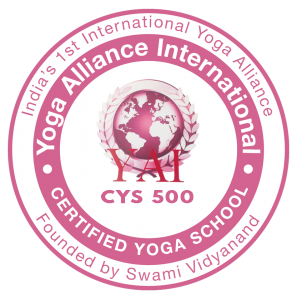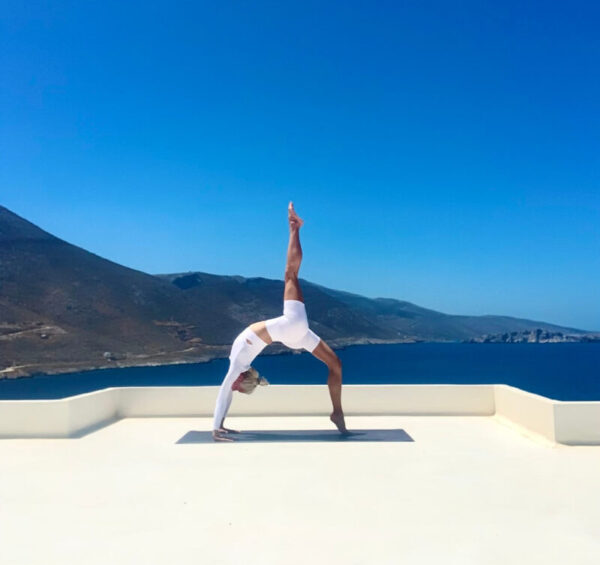Information


Learn about the 3 important aspects to consider when practicing backbend asanas.
Back-bending asanas can definitely look beautiful, but they require a lot of hard work. It’s important to take in consideration that every physical body has its own natural abilities & limitations. Some people are naturally more flexible than others. They might be able to almost effortlessly get into Chakrasana/Urdhva Dhanurasana. Other people are naturally more strong, therefore they might approach arm balances with more ease or hold Navasana for longer. No physical body is perfect and thankfully yoga asana practice does not require this. Many of the asanas are available to most people, using modifications or yoga props for extra support.
What I sometimes see happen for those wanting to deepen their backbends is that they tend focus just on this. They over practice the more dynamic ones and exhaust their body and spine. They have no particular technique to this type of attempts, it is just the continuous practice of spine extension. And whilst results can indeed come quicker, the body might not be ready for this quick shift. As with anything in excess, over time this will cause exhaustion, muscle fatigue and maybe even injury.
The 3 most important aspects of practicing backbend asanas in my opinion are safety, technique and patience. Let’s look at each of these in more detail.
This concept should be applied to all asanas. Yoga postures are not a physical performance, but a physical practice. Each one requires lots of work and commitment through gradual effort applied, repetition and practice, for the body to safely learn to be steady in the asana. Therefore safety is important. Learn about the alignment necessary. Alignment is not there to make us reach perfection, but to keep us safe in the asana. For example, a person who is naturally very flexible and can get into most backbends with ease, should learn to recognise when to stop. Because if over flexibility is there, then one may not be aware when too much effort is applied too quickly and injury can occur without one even realising.
Our back is also said to be the area where a lot of emotional tension related to Muladhara (root chakra) and Swadisthana (sacral chakra) can be stored. Energetically this can create a blockage like sensation and can take a lot of time to release. So first we need to get ourselves grounded and steady, and then begin to open up, let go and welcome in. These are all qualities of Anahata, the heart chakra. We must learn to focus and be completely aware in the practice. To work with the body not go against it.
There are specific steps to follow before approaching a backbend asana. First we must learn to ground the body and mind through (usually) standing or seated asanas and by coming to a cycle of complete and natural breathing flow. Then as we journey into the practice, we gradually shift the focus on opening the hips to provide a healthy mobility range in this area. Both the hip flexors and hip extensors connect to and have an impact on the lower back. If there is stiffness experienced in the hips, and we don’t focus on this area first, then the backbend will not occur in a safe manner. Only afterwards we can start to focus on opening the chest and explore our spine extension range of movement. It is also important to remember that the lumbar spine naturally has a curve, so the extension to focus on is primarily in the thoracic area. This is the part that most needs this movement and rarely we apply this outside of our asana practice. So on the mat, it is the perfect opportunity to do so.
How we breathe is very important too in chest opening asanas. On inhalation we rise and expand through the chest, and on exhalation we create more focus on the hips supporting the backbend or apply the most effort. It naturally makes sense that when we practice backbend asanas, our inhalation will help us open the chest more. It is the fuel of our physical existence. Just as in Setu Bandha Sarvangasana (bridge pose) for example, first we inhale and open the chest, then as we exhale we raise the hips. The energising effect of practicing backbend asanas can be fully experienced only when we learn to use the breath in synchronicity with the movement. When the breathing is done effectively, and we work on the thoracic spine flexibility, then the chest and shoulders begin to open with more ease, more naturally.
And as always, counter poses are very important. I always say practice maximum 2 backbends but then apply a forward fold & some gentle twists to neutralise the spine.
Lack of patience is also something we often experience in our asana practice. We want instant results, forgetting that yoga is a lifestyle and a sadhana which ideally we can continue throughout our life, at any age. It takes time, consistency and patience. I have been there myself too. We want so much to do an asana because we believe in ourselves, but sometimes the patience is our practice. We must learn to take it step by step. I get questions such as “how long will it take to do it this asana? What do I need to do?”. This is irrelevant, remember it is not a performance, We need to practice a consistent, balanced practice everyday. And see what comes. Please don’t force your body into any backbend or any other asana. Recognise this is ego, not a higher self decision. Teach your body patiently, learn to breathe correctly in the asana and then let it come when it comes. If you flow with the rhythm of your practice, then you can naturally begin to open your heart to what comes. And this is the treasure of our sadhana.